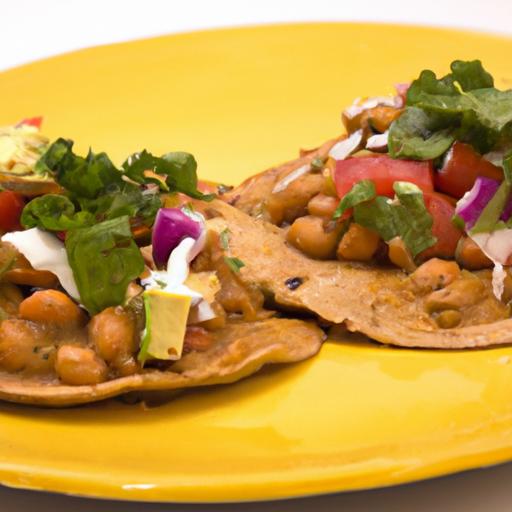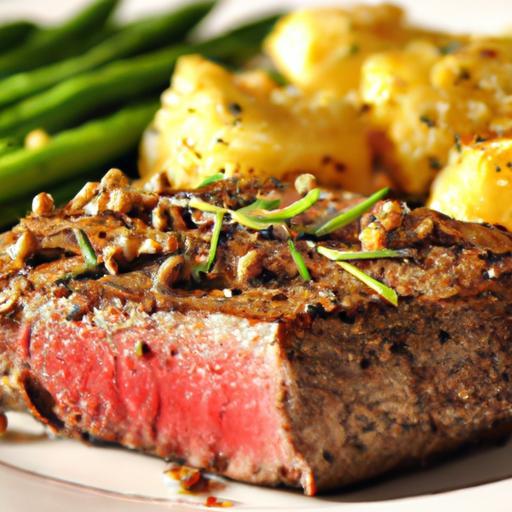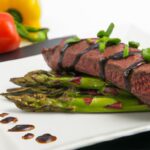There’s something deeply satisfying about the sizzle of a steak hitting a hot pan, its rich aroma promising a juicy, tender bite. Yet, all too often, that quick-cook steak emerges from the heat tougher than anticipated-a frustrating puzzle for home cooks and carnivores alike. Why does a steak, meant to be ready in minutes, sometimes stubbornly resist tenderness? In this article, we’ll unravel the mystery behind tough quick-cook steaks, diving into the science of meat, cooking techniques, and a few insider tips to help you turn every fast steak into a melt-in-your-mouth masterpiece. Get ready to transform your skillet skills and savor steak perfection without the wait.
Why Are My Quick-Cook Steaks Tough? This common kitchen conundrum often comes down to understanding how the thickness and cut influence the steak’s tenderness. When approaching quick-cook steaks, mastering the balance of heat and timing is vital to unlock their full juicy potential and elevate your home-cooked steak experience.
Prep and Cook Time
Preparation: 5 minutes | Cooking: 6-8 minutes | Total Time: 11-13 minutes
Yield
Serves 2 steak aficionados
Difficulty Level
Medium – Requires attention to timing and heat control for perfect results
Ingredients
- 2 quick-cook steaks (such as sirloin or flank, about 1 inch thick)
- 1 tablespoon olive oil or high-smoke point oil
- Salt – preferably kosher or sea salt, to taste
- Freshly ground black pepper, to taste
- 2 cloves garlic, smashed (optional for aroma)
- 1 sprig fresh rosemary or thyme (optional herb flavor)
- 1 tablespoon butter (for finishing)
Instructions
- Take your steaks out of the refrigerator and let them rest at room temperature for 15-20 minutes to ensure even cooking.
- Pat dry both sides of the steaks thoroughly with paper towels to promote a perfect sear; moisture is the enemy of crust formation.
- Season generously on both sides with salt and freshly cracked black pepper. If desired, add a light dusting of garlic powder for extra depth.
- Heat a heavy skillet (cast iron preferred) over medium-high heat until it starts to shimmer. Add the olive oil and swirl to coat.
- Place steaks gently in the hot pan without crowding. Let them sear undisturbed for 3-4 minutes until a rich, brown crust forms. Avoid moving them prematurely to encourage caramelization.
- Flip the steaks, add the butter, smashed garlic, and rosemary (or thyme) to the pan. Tilt the pan slightly and spoon the melted butter over the steaks continuously for 2-3 minutes to baste.
- Use a meat thermometer to check for doneness; for medium-rare, aim for 130°F (54°C) internal temperature. Adjust cooking time slightly for your preferred doneness.
- Remove steaks from the pan and transfer to a plate. Tent loosely with foil and rest for 5 minutes to redistribute juices, ensuring tenderness.
Tips for Success
- Opt for cuts with natural tenderness like sirloin or strip loin. Avoid thicker cuts when short cooking time is crucial, as they require slower, gentler heat.
- Thickness matters: steaks between ¾ and 1 inch work best for quick cooking while remaining juicy inside.
- Rest your steaks after cooking – skipping this can result in juices escaping, leaving tough bites behind.
- If steaks are tough, try a marinade with acidic components like lemon juice or vinegar to break down fibers before cooking.
- Use a cast-iron skillet or similarly heavy pan for the best crust and even heat distribution.
Serving Suggestions
Slice your perfectly cooked steak across the grain into thin strips to maximize tenderness. Serve atop creamy mashed potatoes or grilled asparagus for vibrant contrast. Garnish with a sprinkle of flaky sea salt and a drizzle of the pan’s buttery jus for that rich, inviting finish. A side of bright chimichurri or herbaceous pesto can add a delightful brightness, enhancing each tender mouthful even further.
| Nutritional Info (per serving) | Calories | Protein | Carbs | Fat |
|---|---|---|---|---|
| Quick-Cook Steak | 320 | 28g | 0g | 22g |

For a deeper dive into steak cuts and preparation techniques, check out our Ultimate Guide to Steak Cuts. To understand the chemistry of meat tenderization, explore the science behind cooking on ScienceDaily.
Q&A
Q&A: Why Are My Quick-Cook Steaks Tough? Unraveling the Mystery
Q1: I sear my steaks quickly over high heat, yet they come out tough every time. Why is that?
A1: It might seem counterintuitive, but cooking steak too quickly over intense heat can cause the muscle fibers to contract and squeeze out moisture, leaving you with a tough, dry bite. Quick-cook steaks, like flank or skirt, need just the right balance-high heat for a short time-but also proper preparation and rest to stay tender.
Q2: Does the cut of steak affect how quickly I can cook it?
A2: Absolutely! Tender cuts like ribeye or filet mignon have more marbling and less connective tissue, so they tolerate quick cooking better. Leaner, tougher cuts-think sirloin or round-require slower cooking methods or marinating to break down fibers. Choosing the right cut matters if you want them tender in a flash.
Q3: Can marinating really make a difference in tenderness for quick-cook steaks?
A3: Yes! A marinade with acidic ingredients like lemon juice, vinegar, or yogurt helps break down tough proteins on the steak’s surface, softening it. Even a brief 30-minute soak can prime your meat for a more tender result when you cook it quickly.
Q4: What role does steak thickness play in preventing toughness?
A4: Thicker steaks give you a margin for error-allowing a quick sear outside while preserving a juicy interior. Thin steaks can overcook in an instant, squeezing out juices and toughening up. For quick-cook steaks, aim for about 1-inch thickness or more when possible.
Q5: Should I season my steak before or after quick cooking?
A5: Season generously beforehand! Salt is a magical ingredient that draws moisture to the surface, dissolves, then reabsorbs it to enhance juiciness and flavor. Just don’t salt too early (over an hour) if cooking quickly, or it may dry out the surface.
Q6: How important is resting the steak after cooking?
A6: Don’t skip it! Resting lets internal juices redistribute evenly. Cutting into a steak straight off the heat causes all that precious moisture to run out, resulting in a dull, tough texture. A 5 to 10-minute rest can be the difference between chewy and melt-in-your-mouth.
Q7: Any tips for the actual cooking technique to avoid toughness?
A7: Go for high heat but limited time-get a good sear to lock in juices, but flip only once or twice. Avoid overcrowding the pan, which cools the surface and steams rather than sears. Use a cast iron skillet or grill that holds heat well, and finish with a quick rest.
Q8: Why do some steaks still end up tough despite all these tips?
A8: Sometimes, it’s just the nature of the cut or quality of meat. Older animals or lower grades have more connective tissue that quick cooking can’t break down. In such cases, slow cooking techniques, tenderizing tools, or choosing different cuts may be your best bet.
In summary: Quick-cook steaks can be wonderfully tender but require a dance of heat, timing, cut selection, seasoning, and resting. Master these steps, and your steaks won’t just be fast-they’ll be fabulous!
In Retrospect
In the end, the mystery of tough quick-cook steaks unravels not in some hidden secret but in understanding the delicate dance between time, temperature, and technique. By respecting the cut, mastering the heat, and giving your steak just the right moment to shine, you transform a potential chew into a tender triumph. So next time you fire up the pan for a speedy steak fix, remember: quick doesn’t have to mean tough. With a little know-how, your steaks can be juicy, flavorful, and irresistibly tender-every single time.








